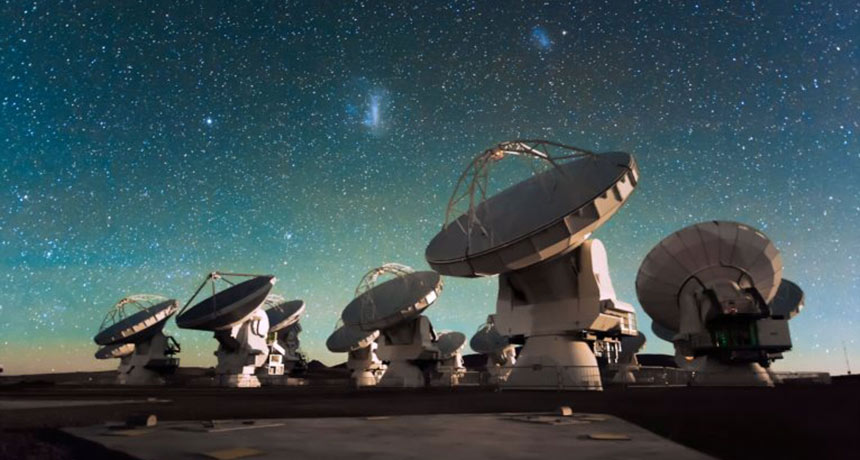The Event Horizon Telescope (EHT) is a set of radio telescopes scattered all over the world and linked by interferometry, a VLBI designed to obtain a high-resolution image of the supermassive black hole Sgr A * located in the heart of the Milky Way. Its working frequency is in the submillimeter (far infrared) part of the spectrum between 1.3 and 0.66 mm (1303 and 666 microns), ie between 230 and 450 GHz.
Astronomers need such a large structure because the image reconstructed by a single parabola or even a single small interferometric network does not make it possible to obtain a fairly accurate image of this object whose diameter (that of its horizon of events or its projected shadow on the accretion disk) is estimated at 10 million kilometers, or 7 times the size of the Sun. This corresponds to an angular diameter of 53 mas (53 milliseconds of arc).
To increase the resolution and to reach a fraction of milliseconds of arc (<0.1 mas at 345 GHz) that is to say better than the network ALMA, it is necessary to collect more “light” and thus to enlarge the collecting surface. The only way to achieve this is to combine the signals received by a dozen satellite dishes or radioastronomy networks installed in Europe and America and then to use imaging algorithms to rebuild an image. Note that the lack of data in some parts of the network will result in a less intense image in the same way as in a choir distributed over a large area, the sound of a person singing weakly produces a lower and less audible note. Astronomers will recognize the image of the object but it will be imperfect but certainly much more accurate than if they used a single radio telescope.
Tested since 2006 on various objects of the deep sky, we wait for the first images of the black hole at the end of 2017 or in 2018.

Good
fdsaf
Iuhi
ssss
DDDD
Hagdy
where
DAZ
aa
bro this site of all things to advertise me? i like science but seriously? what about the hot milfs in my area? where did they go?